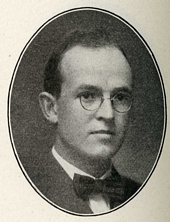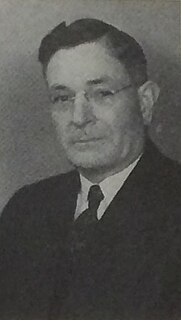
Marcus Miller is an American jazz composer, producer and multi-instrumentalist, best known as a bass guitarist. He has worked with trumpeter Miles Davis, pianist Herbie Hancock, singer Luther Vandross, and saxophonist David Sanborn, among others.

The Secret Six, or the Secret Committee of Six, was a group of men who secretly funded the 1859 raid on Harper's Ferry by abolitionist John Brown. Sometimes described as "wealthy," this was true of only two. The other four were in positions of influence, and could, therefore, encourage others to contribute to "the cause."

Kryptos is a sculpture by the American artist Jim Sanborn located on the grounds of the Central Intelligence Agency (CIA) in Langley, Virginia. Since its dedication on November 3, 1990, there has been much speculation about the meaning of the four encrypted messages it bears. Of the four messages, the first three have been solved, while the fourth message remains as one of the most famous unsolved codes in the world. The sculpture continues to be of interest to cryptanalysts, both amateur and professional, who are attempting to decipher the fourth passage. The artist has so far given two clues to this passage.
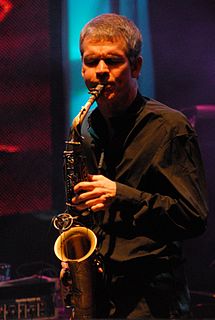
David William Sanborn is an American alto saxophonist. Though Sanborn has worked in many genres, his solo recordings typically blend jazz with instrumental pop and R&B. He released his first solo album Taking Off in 1975, but has been playing the saxophone since before he was in high school.
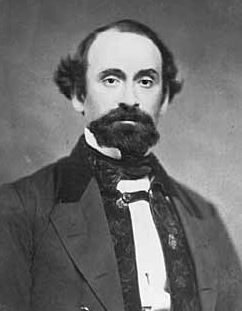
The Sanborn incident or Sanborn contract was an American political scandal which occurred in 1874. William Adams Richardson, President Ulysses S. Grant's Secretary of the Treasury, hired a private citizen, John B. Sanborn, a former Union General, to collect $427,000 in unpaid taxes. Richardson agreed Sanborn could keep half of what he collected. After extorting money from companies to pay back taxes by falsely making claims of tax evasion, Sanborn kept $213,000, of which $156,000 went to his various assistants. After an investigation by the Treasury Department discovered corruption, President Grant signed legislation making the practice illegal.
Stewart Levine is an American record producer. He has worked with such artists as The Crusaders, Minnie Riperton, Lionel Richie, Simply Red, Hugh Masekela, Dr. John, Randy Crawford, B.B. King, Huey Lewis and the News, Patti Labelle, Sly Stone, Boy George, Peter Blakeley, Joe Cocker, Oleta Adams, Killing Joke, Boz Scaggs, Womack and Womack, David Sanborn, Brenda Russell, Lamont Dozier, Curiosity Killed the Cat, Aaron Neville, Everyday People, Jamie Cullum and The Marshall Tucker Band.

"You Don't Know Me" is a song written by Cindy Walker based on a title and storyline given to her by Eddy Arnold in 1955. "You Don't Know Me" was first recorded by Arnold that year and released as a single on April 21, 1956 on RCA Victor. The first version of the song to make the Billboard charts was by Jerry Vale in 1956, peaking at #14 on the pop chart. Arnold's version charted two months later, released as an RCA Victor single, 47-6502, backed with "The Rockin' Mockin' Bird", which reached #10 on the Billboard country chart. Cash Box magazine, which combined all best-selling versions at one position, included a version by Carmen McRae that never appeared in the Billboard Top 100 Sides listing.
Juma Santos, also known as Jumma Santos, born James P. Riley, was a percussionist and master drummer known for his extensive work over four decades with African music, Caribbean music, jazz, fusion and R&B artists.
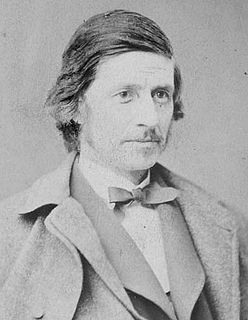
Franklin Benjamin Sanborn was an American journalist, author, and reformer. Sanborn was a social scientist, and a memorialist of American transcendentalism who wrote early biographies of many of the movement's key figures. He founded the American Social Science Association, in 1865, "to treat wisely the great social problems of the day". He was a member of the Secret Six, or "Committee of Six", which funded the militant abolitionist John Brown.

St. Paul's historic Landmark Center, completed in 1902, originally served as the United States Post Office, Courthouse, and Custom House for the state of Minnesota. It was designed by Willoughby J. Edbrooke, who served as Supervising Architect of the U.S. Treasury Department in 1891–92. Edbrooke designed a body of public architecture, much of which, like this structure, was completed after his 1896 death. Landmark Center stands at 75 West Fifth Street in Rice Park and is now an arts and culture center.
Rob Mathes is an American record producer, music arranger, composer, songwriter, and performer. He also writes bluesy spiritual-pop music.
Coastline is an outdoor sculpture by American artist Jim Sanborn installed at the National Oceanic and Atmospheric Administration complex in Silver Spring, Maryland.
John Greene Jr. was a deputy governor of the Colony of Rhode Island and Providence Plantations who spent almost his entire adult life in the public service of the colony. Born in England, he was the son of John Greene Sr. and Joan Tattersall, and sailed to New England with his parents in 1635 aboard the ship James. His father, after coming from Massachusetts to Providence, became one of the original settlers of Warwick. In 1652 Greene served in his first public role as a commissioner from Warwick, and served in some public capacity every year until 1690 when he was first chosen as deputy governor of the colony. He then served 10 consecutive one-year terms in this capacity, retiring from public service in 1700 at the age of 80. He was one of the 10 Assistants named in the Royal Charter of 1663, which would become the basis for Rhode Island's government for nearly two centuries. During the devastating events of King Phillips War, Greene was one of 16 prominent inhabitants of the colony whose counsel was sought by the General Assembly.

As We Speak is a studio album by David Sanborn, released in 1982 through the record label Warner Bros. The album reached number 70 on the Billboard 200, number 32 on Billboard's R&B Albums chart and number 1 on the Jazz Albums chart.
Sanborn is a surname. Notable people with the surname include:

John Sanborn was a key member of the second wave of American video artists that included Bill Viola, Gary Hill, Dara Birnbaum and Tony Oursler. Sanborn’s body of work spans the early days of experimental video art in the 1970s through the heyday of MTV music/videos and interactive art to digital media art of today.
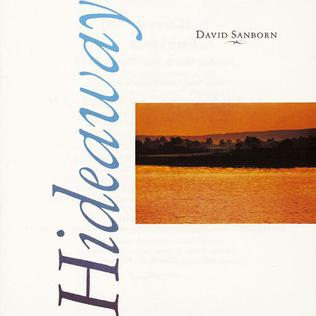
Hideaway is the fifth studio album by American jazz fusion artist David Sanborn, released by Warner Bros. Records in February 1980. The album was produced by Michael Colina.

